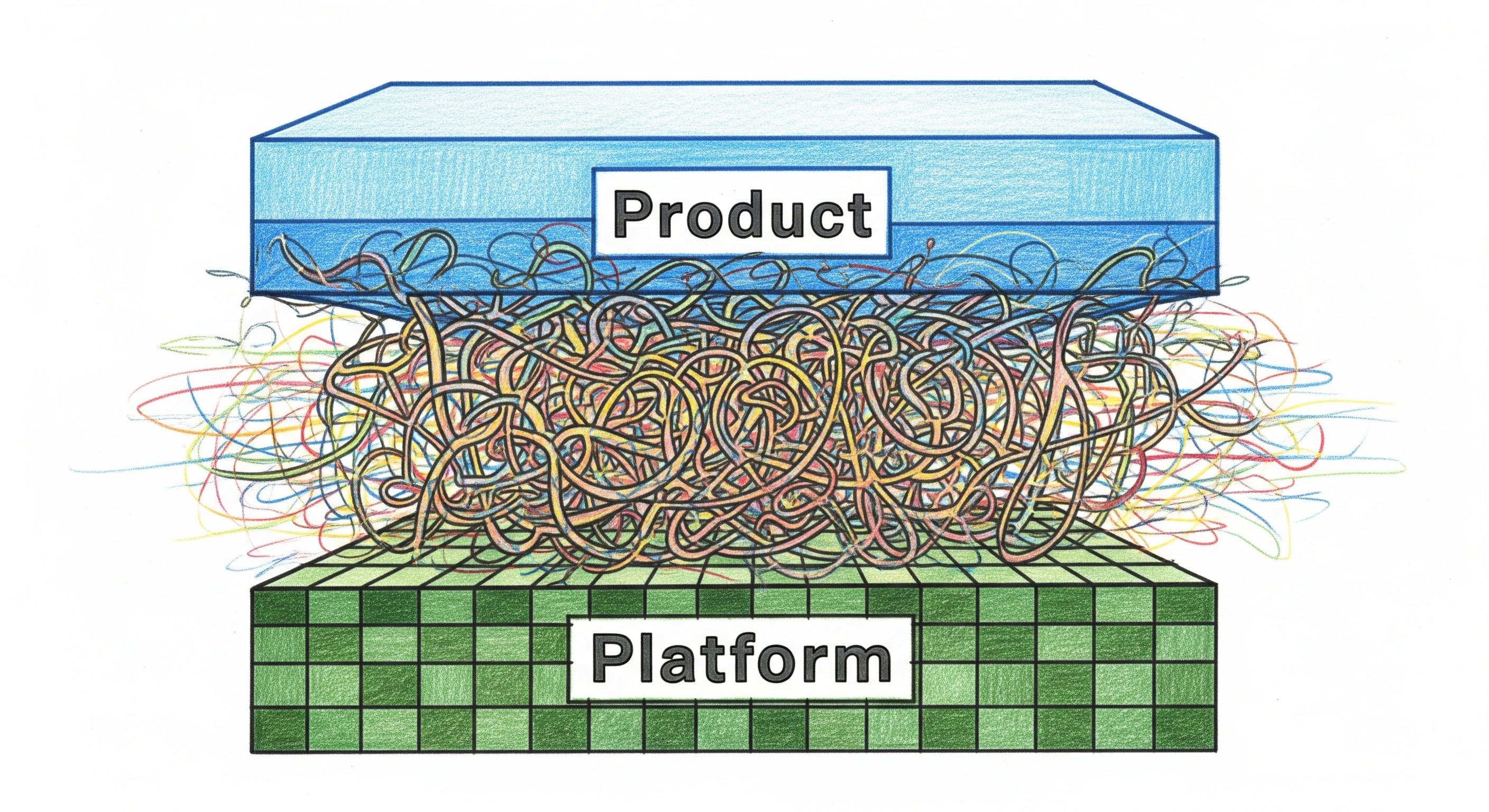The Messy Middle
I’ve talked about a messy middle before, but that’s not the only messy middle. That one was about the land of It Depends. Where you can’t know the answer until you have all of the context. But there are other messy middles.
Consider the space between products and platforms. The split between what customers bought, and what the company built internally so that they could then build the things that customers bought. In almost all cases people know about the products, but almost no-one outside the company knows about the platforms.

Not every company has this split. There has to be enough products, or at least enough engineers, for that to happen. At some point they become not just different things to work on, they become entirely different organizations within a single company.
It’s something you don’t see working at small, single product companies. You often don’t see it at companies with only a few products. Back when I was working for Microprose the company was working on multiple games at any given time, but each game development team was completely self-contained. There were a few people who worked across games, but the code for each one was essentially unique. Everything was a product.
The first place I really saw the split was at Microsoft, where there was a Windows team, that was the platform for everything else, a few other big teams, like Office, Developer Division, and SQL, and a bunch of smaller orgs, like Online, Home, Games, and Research. The odd thing there was that Windows was also a product itself.
At the time I was on the Product side, working on games, and didn’t pay too much attention to the platform side of the world. I only cared about what APIs it provided. Also, we were such a tiny part of the Microsoft world that Windows, our platform, might as well have been made by a different company. We could ask a few questions that outsiders couldn’t, but we didn’t have much influence. The Office and Developer Division teams had that.
Then I moved to Uber. When I started at Uber they had just gone through their split. By that time I was on the platform side, working deep in the engine room. At that time Uber was already big enough that we even saw differences between real-time and offline/batch processing.
You see, down in the engine room we spent a lot of time building a product agnostic processing engine. We didn’t care what folks did with our CPUs and persistent storage. We abstracted away the complexity of scheduling and placement engines and let our customers focus on data and control flow. And that’s where I ran head-first into another messy middle.
Besides making sure the system worked and was easy to use, I spent a lot of my time as an evangelist. Showing countless other teams how they could benefit from our platform. The more success I had, the more I saw that there was at least one missing layer. I saw multiple teams creating their own internal platforms, based on our platform.
Being closer to the product, those platforms were more opinionated than ours. Because they knew what their 2-5 teams were doing and didn’t care about the other 20 or 30 teams using the base platform, they were able to make assumptions and build decisions into their tools.
That’s where it started to get messy. Those little infrastructure teams didn’t really know about or talk to each other. They started to duplicate work. Or at least solve similar problems. Not just each other’s, but problems that we were solving. The line between the different teams and the platform ebbed and flowed as problems were identified and solved.
It was a bit of a surprise, but it wasn’t all bad. Yes, it was messy. Yes, there was some duplication. But there was also a lot of advancement. By not forcing groups of teams to wait for a shared solution those teams were able to move faster. By waiting for consensus on the solution to form and move into the platform we avoided churn. By consolidating known shared work we freed up resources for product specific work.
We turned what could have been a bottleneck into a competitive advantage. Through lots of communication. Of problems. Of intent. Of timelines. By keeping the cross coupling down. By encouraging teams with similar context to make those specialized solutions that kept domain specific work with the domain. By taking the common parts of those domain specific solutions and commoditizing them. By recognizing that one team’s platform is another team’s product.
